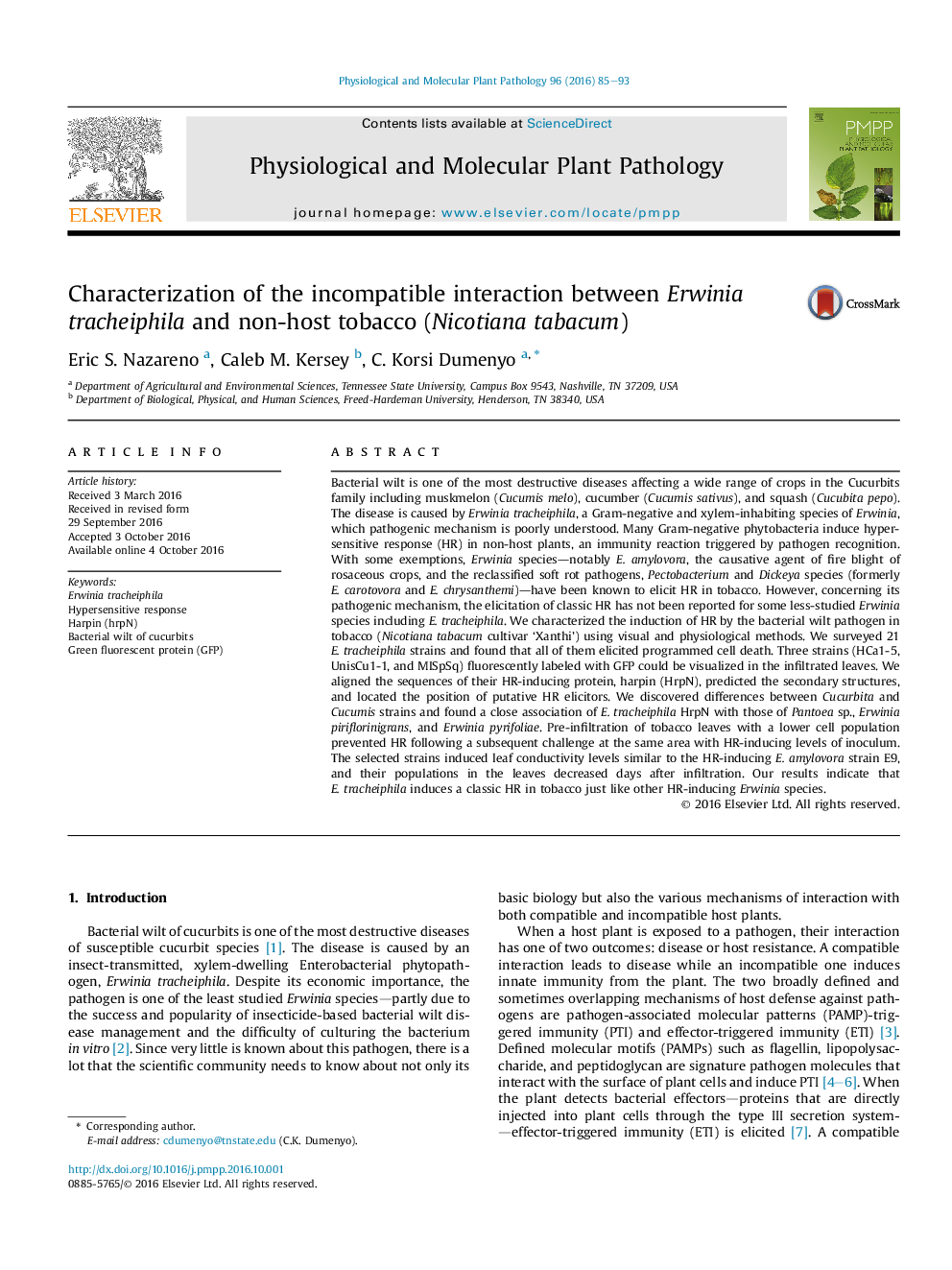| Article ID | Journal | Published Year | Pages | File Type |
|---|---|---|---|---|
| 5921040 | Physiological and Molecular Plant Pathology | 2016 | 9 Pages |
â¢The first report that E. tracheiphila, which causes bacterial wilt of cucurbits elicits hypersensitive response in tobacco.â¢Physiologically, the reaction is indistinguishable from that caused by the HR-inducing Erwinia amylovora.â¢Deduced harpin (HrpN) sequences from E. tracheiphila strains separate according to the genus of the host plant origin.
Bacterial wilt is one of the most destructive diseases affecting a wide range of crops in the Cucurbits family including muskmelon (Cucumis melo), cucumber (Cucumis sativus), and squash (Cucubita pepo). The disease is caused by Erwinia tracheiphila, a Gram-negative and xylem-inhabiting species of Erwinia, which pathogenic mechanism is poorly understood. Many Gram-negative phytobacteria induce hypersensitive response (HR) in non-host plants, an immunity reaction triggered by pathogen recognition. With some exemptions, Erwinia species-notably E. amylovora, the causative agent of fire blight of rosaceous crops, and the reclassified soft rot pathogens, Pectobacterium and Dickeya species (formerly E. carotovora and E. chrysanthemi)-have been known to elicit HR in tobacco. However, concerning its pathogenic mechanism, the elicitation of classic HR has not been reported for some less-studied Erwinia species including E. tracheiphila. We characterized the induction of HR by the bacterial wilt pathogen in tobacco (Nicotiana tabacum cultivar 'Xanthi') using visual and physiological methods. We surveyed 21 E. tracheiphila strains and found that all of them elicited programmed cell death. Three strains (HCa1-5, UnisCu1-1, and MISpSq) fluorescently labeled with GFP could be visualized in the infiltrated leaves. We aligned the sequences of their HR-inducing protein, harpin (HrpN), predicted the secondary structures, and located the position of putative HR elicitors. We discovered differences between Cucurbita and Cucumis strains and found a close association of E. tracheiphila HrpN with those of Pantoea sp., Erwinia piriflorinigrans, and Erwinia pyrifoliae. Pre-infiltration of tobacco leaves with a lower cell population prevented HR following a subsequent challenge at the same area with HR-inducing levels of inoculum. The selected strains induced leaf conductivity levels similar to the HR-inducing E. amylovora strain E9, and their populations in the leaves decreased days after infiltration. Our results indicate that E. tracheiphila induces a classic HR in tobacco just like other HR-inducing Erwinia species.
